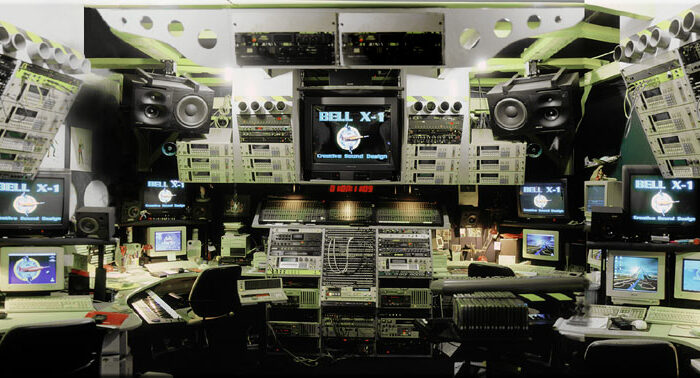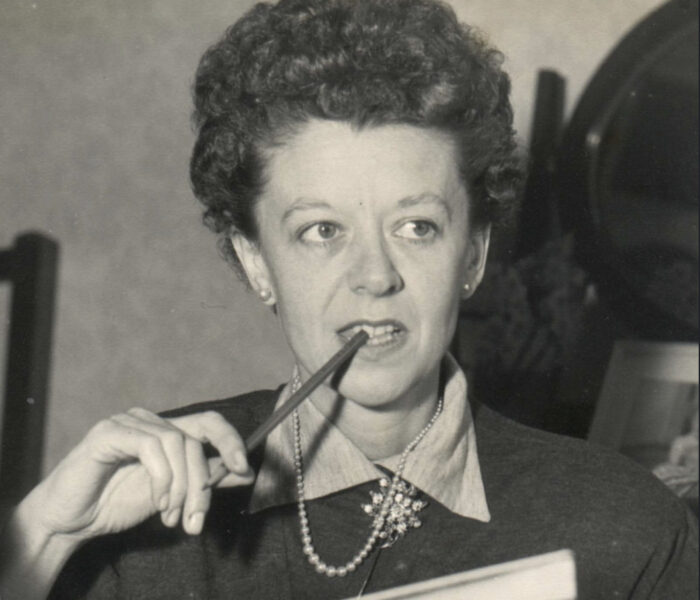Le FRAC Franche-Comté consacre jusqu’au 14 avril une exposition monographique à Lawrence Abu Hamdan. Son travail, s’il a souvent le son et l’écoute pour sujet ou médium, prend les formes les plus variées : installations, documentaires, vidéos, performances, photographies… Artiste jordanien d’origine libanaise, il collabore régulièrement avec différentes organisations internationales en tant qu’expert audio. Son art est inséparable d’une pratique de l’enquête dont il a contribué à renouveler les méthodes et les outils. Une question traverse son œuvre depuis ses débuts, elle nous servira de guide : qu’est-ce qu’un art sonore politique ?
Le bruit d’un avion de chasse israélien survolant le Sud-Liban, la mélodie d’un camion de glace, les cris d’une femme derrière le mur d’une salle de bains, le son des pas sur les marches d’un escalier métallique, le silence qui s’est installé dans la prison syrienne de Saydnaya à partir de 2011, le bruissement des retrouvailles dans les salles de lecture de la Haskell Free Library and Opera House, etc. Aucun de ces sons n’a en lui-même de signification politique. Tout dépend de l’usage qu’on en fait ou de la manière dont on l’interprète. Tant qu’on ne comprend pas ce qu’il signifie, en l’occurrence la transformation de la prison de Saydnaya en zone d’extermination, un silence n’est qu’une absence de son. Et le bruit d’un avion de chasse un son parmi d’autres, du moins jusqu’à ce qu’on le relie aux sons de tous les avions, hélicoptères et drones qui, chaque jour, survolent sans autorisation le territoire libanais, exerçant une pression constante sur ses populations.
Violence atmosphérique
Dans The diary of a sky, une installation vidéo créée en 2023, Lawrence Abu Hamdan fait le récit détaillé de cette « violence atmosphérique » – c’est ainsi qu’il la nomme – qui commença en 2007, quelques mois après la fin du conflit israélo-libanais de 2006. Il décrit l’enquête qu’il mena pour réunir les données documentant ces violations systématiques de l’espace aérien libanais : auprès de l’ONU, qui conserve dans ses archives les lettres du représentant libanais aux Nations-Unies contenant les informations enregistrées par les radars de l’armée ; auprès de la population dont il recueille les témoignages audio et vidéo sur un site dédié, airpressure.info. Il relate les expériences du physicien allemand Hartmut Ising qui, dans les années 1970, mesura les effets sur la santé publique du survol à basse altitude des avions de chasse américains basés en Allemagne de l’Ouest. Mais il s’intéresse aussi à ce qui se passe au Liban, à l’incurie de ses gouvernements successifs, incapables de protéger la population de ce qu’il faut bien appeler une guerre sonore, aux pannes récurrentes d’électricité qui obligent les Libanais à s’équiper de générateurs dont le volume sonore, 70 db, est équivalent à celui des avions israéliens, aux vols touristiques que l’armée libanaise organise dans ses hélicoptères pour compenser la baisse de ses budgets (et qui ne fait qu’ajouter à la pollution sonore ambiante). La situation que décrit Abu Hamdan est donc celle d’habitants pris entre deux guerres, celle larvée que mène Israël et celle, non moins violente, qu’ils subissent de la part de leurs propres élites. Un fait est particulièrement éloquent : le volume des générateurs d’électricité dans les grandes villes du pays couvre, quand ils fonctionnent (souvent plusieurs heures par jour), le bruit des avions israéliens, rendant ces derniers, et leur nuisance, inaudibles.
Cette installation s’inscrit dans une histoire qui reste à écrire – malgré quelques contributions importantes comme celles de Steve Goodman (Sonic Warfare, 2011), Michael Bull (Sirens, 2020, une étude sur le son et la culture des sirènes) ou Juliette Volcler (Le son comme arme, 2011) – celle d’une géopolitique du sonore. Elle ne se contente pas de documenter l’occupation par les forces de défense israéliennes de l’espace aérien libanais, elle décrit aussi les effets sonores de la corruption et des luttes entre factions qui gangrènent le pouvoir du pays.
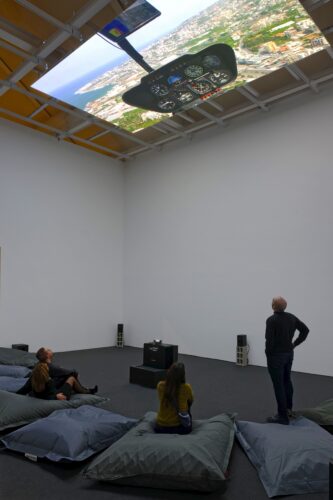
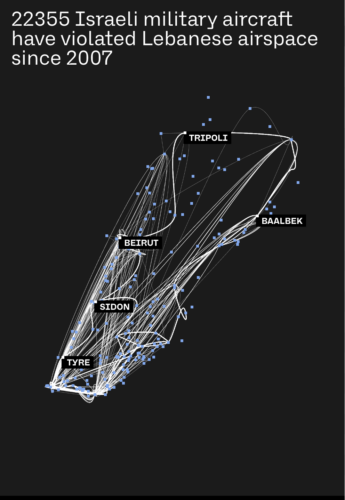
Sonic detective
Parallèlement à sa pratique d’artiste, Lawrence Abu Hamdan travaille régulièrement en tant qu’expert ou « détective audio » (« sonic detective » comme il aime à se nommer) pour des organisations comme Amnesty International, Defence for Children International et Forensic Architecture. Certaines de ses œuvres ont été utilisées comme pièces à conviction par des tribunaux. L’exemple le plus fameux est celui de The Freedom of Speech Itself, une installation sonore de 2012 qui rend compte de l’usage que faisaient les autorités anglaises des outils d’analyse vocale pour évaluer les accents des demandeurs d’asile (afin de déterminer leurs origine et authenticité) et qui, pour la Cour britannique du droit d’asile, devint une preuve des abus commis par la police aux frontières britannique. Il convient évidemment de distinguer ces deux activités, qui obéissent à des finalités différentes et souvent incompatibles. Comme le souligne Abu Hamdan dans un entretien :« Le plus souvent, je joue deux rôles totalement différents. Ce ne sont pas les œuvres d’art qui se retrouvent au tribunal ou qui sont utilisées par la défense, mais plutôt l’analyse audio et la recherche acoustique. Les œuvres d’art que j’ai réalisées et qui traitent des mêmes sujets que les cas sur lesquels j’ai travaillé en tant qu’analyste tentent de repousser les limites de ce qui est conçu conventionnellement par la justice comme un témoignage. » (1)
Un exemple particulièrement frappant est celui de la vidéo Rubber Coated Steel. L’œuvre revient sur une affaire sur laquelle Abu Hamdan a enquêté à la demande de l’agence Forensic Architecture et de l’ONG Defence for Children International. En mai 2014, en Cisjordanie, des soldats israéliens tuèrent deux adolescents palestiniens non armés, Nadeem Nawara et Mohamad Abu Daher. On lui demanda d’analyser les enregistrements audios des coups de feu afin de déterminer si les soldats avaient tiré à balles en caoutchouc, comme ils l’affirmaient, ou à balles réelles – ce qui est évidemment illégal. La vidéo met en scène, dans un tribunal imaginaire, le procès de ces soldats. À l’image, les sonagrammes des coups de feu réalisés par l’artiste vont et viennent le long de rails fixés au plafond d’un long couloir bétonné comme des cibles dans un stand de tir. Les voix des membres du tribunal, président, avocat, procureur et expert occupent la bande-son. Afin d’analyser les coups de feu, Abu Hamdan réalisa des sonagrammes, des visualisations des fréquences sonores des enregistrements. Il put ainsi distinguer ce qui, à l’oreille, ne semblait présenter aucune différence. Les soldats israéliens avaient pris l’habitude de masquer leurs tirs à balles réelles en fixant sur le canon de leur fusil d’assaut (M16) un adaptateur conçu pour des balles en caoutchouc (rubber-bullet adapter). Derrière deux sons apparemment identiques, le tir à balle en caoutchouc et le tir à balle réelle avec adaptateur, un crime se dissimulait. Encore fallait-il rendre visible la différence et donc observer les micro-variations d’intensité et de fréquence entre les deux coups de feu. À la fin de la vidéo, le procureur ajoute que les vrais experts n’ont pas besoin de visualisations pour percevoir ces nuances. Les vrais experts sont les manifestants palestiniens. L’un d’entre eux témoigna qu’il avait entendu le son des munitions réelles et avait couru se mettre à l’abri. Les vrais experts ne savent pas lire les sonagrammes mais ils ont appris à écouter le son des coups de feu parce que leur vie en dépend. Les témoignages de ces vrais experts n’avaient aucune valeur juridique parce qu’ils étaient les seuls à entendre cette différence. Pour convaincre une cour militaire il fallait des preuves tangibles, en l’occurrence visibles.
Le silence de Saydnaya
Dans certains cas cependant, ces preuves ne sont pas accessibles. En 2016, Abu Hamdan enquêta avec Amnesty International et Forensic Architecture sur la prison syrienne de Saydnaya, à 25 km au nord de Damas, où, depuis le début des manifestations en 2011, plus de 13.000 personnes ont été exécutées. En raison de l’inaccessibilité de la prison aux observateurs indépendants, la seule source disponible pour enquêter sur les exactions qui y furent commises sont les (rares) détenus qui en sont sortis vivants. Et parce qu’ils n’avaient rien vu de la prison (on leur bandait les yeux à chaque déplacement et ils étaient maintenus dans une obscurité presque totale), il n’était possible de s’appuyer que sur leur mémoire auditive (qu’ils avaient considérablement développée). Le travail d’Abu Hamdan consista à les interroger en sollicitant cette mémoire, à reconstituer avec eux à partir des sons dont ils se souvenaient l’architecture de la prison et ce qu’il s’y passait. Peu après le passage de l’entretien cité plus haut, il ajoutait :
« Amnesty International pensait qu’ils engageaient un expert audio afin de réaliser une étude technique, mais, à bien des égards, ce dont ils avaient besoin en réalité, c’était d’un artiste. Pourquoi ? Parce qu’il s’est avéré que nous devions travailler au-delà du langage et reconstituer le langage à partir de la forme (auditive) : en articulant des sons, en changeant et en adaptant les mots pour qu’ils deviennent des onomatopées, en reproduisant des sons, en faisant entendre des sons de films ou en écoutant des notes de musique. Écouter des sons, des bruits, des clics et des pops, tout cela est devenu une sorte de langage que nous avons commencé à parler les uns avec les autres au cours des sept jours passés avec ces témoins. Si l’on peut définir l’art comme ce qui existe au seuil de la capacité à parler (speak-ability), et qui se situe peut-être en dehors du langage, alors c’est un bon exemple de la manière dont les compétences d’un artiste peuvent être mises au service d’une enquête. »
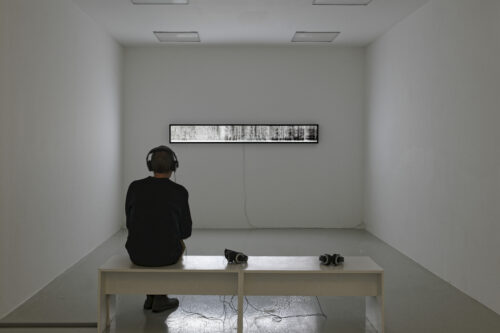
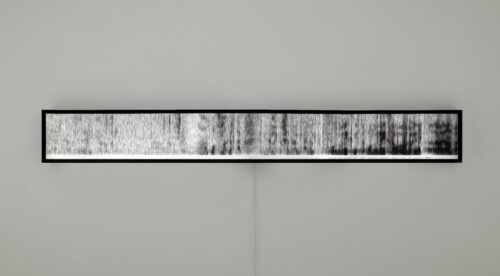
Ce travail d’enquête a ensuite donné lieu à plusieurs œuvres, dont Saydnaya (the missing 19db) en 2016 – une installation sur le silence qui, à partir de 2011, fut imposé aux détenus de la prison syrienne (sous peine de mort) –, Earwitness inventory et Walled-unwalled (les deux datent de 2018).
Il s’agissait pour Abu Hamdan de donner corps et consistance à la figure du témoin auditif (earwitness). Il a ainsi pu montrer qu’il n’était pas moins crédible qu’un témoin visuel, à condition de pouvoir reconstituer avec précision les sons entendus, ce qui suppose quelquefois un peu d’imagination. Dans Walled-unwalled, une vidéo sur la recrudescence des murs et leur perméabilité aux nouveaux outils de surveillance, il s’est intéressé à un son que les détenus de Saydnaya entendaient souvent mais qu’ils ne pouvaient ni situer ni identifier : un bruit de démolition ou d’effondrement qui passait à travers les murs en béton de la cellule. Il découvrit que la prison reproduisait l’architecture de certaines prisons est-allemandes organisées en étoiles autour d’un escalier central qu’empruntaient les gardiens. Cette colonne d’air vide, à part pour l’escalier, conduit et amplifie les sons de toutes les ailes et étages, les rendant audibles dans des cellules souvent très éloignées de leurs sources. Ce qui a le double avantage d’offrir aux gardiens un point d’écoute sur la prison dans son ensemble et de maintenir les détenus dans une inquiétude auditive constante. Une architecture que l’on pourrait qualifier, déclinant le mot de Jeremy Bentham, de panauditive. C’est ainsi qu’Abu Hamdan a pu identifier le son mystérieux : celui d’un corps battu avec un tuyau en métal, venu d’une autre aile et d’un autre étage, amplifié par l’escalier central, déformé par les murs, devient le son d’une démolition, ce qu’il est aussi.
Politiques du sonore
Un son (ou une absence de son) est politique si l’on en fait une arme ou l’instrument d’une oppression. Il l’est aussi s’il devient un moyen de contrôle ou de surveillance. Il l’est enfin si on le fait apparaître comme tel. Rendre audible, et visible, l’usage politique, et géopolitique, de certains sons, est un des objectifs que Lawrence Abu Hamdan a donné à son travail d’artiste (et d’expert). Pour ce faire, il a développé une forme d’écoute originale, qui suppose évidemment certains outils et compétences techniques, mais dont la singularité tient plutôt, me semble-t-il, à une éthique : celle qui consiste à croire le témoin, à ne pas utiliser les logiciels d’analyse vocale pour tenter d’identifier son accent mais pour comprendre ce qu’il a à dire ou l’aider à se souvenir ; celle qui consiste à donner à celles et ceux qui subissent la violence de sons transformés en armes ou en instruments de surveillance ou de contrôle les moyens de se défendre : de mener des combats juridiques, de transformer la situation subie en problème public et d’obliger les pouvoirs à se réformer.
*
Il existe entre le Canada et les États-Unis une bibliothèque qui est traversée par la frontière. Une porte donne sur le Canada, une autre sur les États-Unis, mais, une fois qu’on est à l’intérieur, la frontière n’est plus qu’une ligne noire sur le sol. Après le décret 13769, promulgué par le président Trump en 2017, qui interdit l’entrée sur le territoire américain des ressortissants de dix pays musulmans, de nombreuses familles furent coupées en deux par la frontière canado-états-unienne. Le seul lieu où elles pouvaient encore se réunir était cette bibliothèque, la Haskell Free Library. La moitié états-unienne entrait par la porte des États-Unis, la moitié canadienne par la porte du Canada et elles se rencontraient dans les salles de lecture, qui bruissaient alors du son des retrouvailles. Les bibliothécaires laissaient faire. Ce bruit-là, de joie et de pleurs, personne n’aurait songé à l’interdire. (2)
Lawrence Abu Hamdan: 45th Parallel from Vuk Dragojevic on Vimeo.
Bastien Gallet
Lawrence Abu Hamdan, Aux frontières de l’audible, exposition du 19 novembre 2023 au 14 avril 2024 au FRAC Franche-Comté, Besançon
(1) « Tracing the Sonic Image », entretien avec Zachary Cahill, Hannah В Higgins et W. J.T. Mitchell, Portable Gray, vol. 2, n°1, 2019. Ma traduction.
(2) Cette histoire est racontée dans 45th Parallel (2022), une installation vidéo consacrée aux frontières et à certaines de leurs conséquences.
Photos © Blaise Adilon
Photos © Lawrence Abu Hamdan



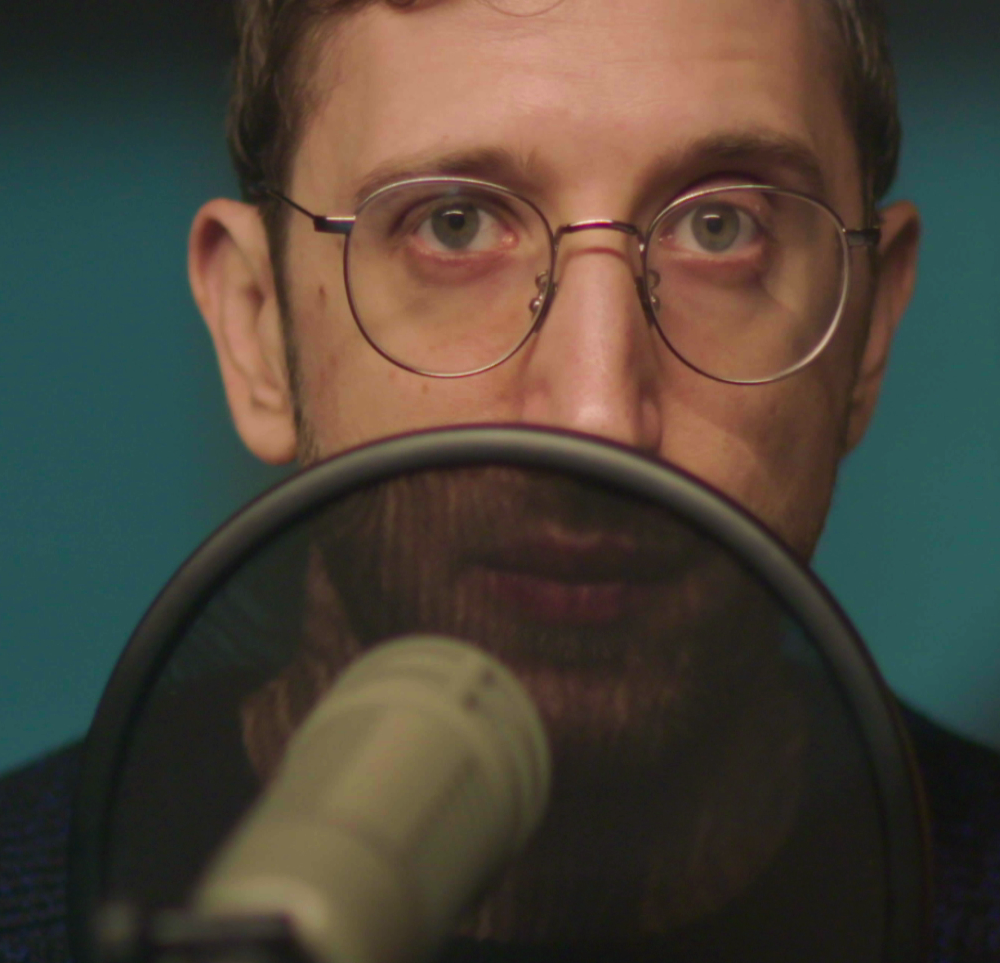)
